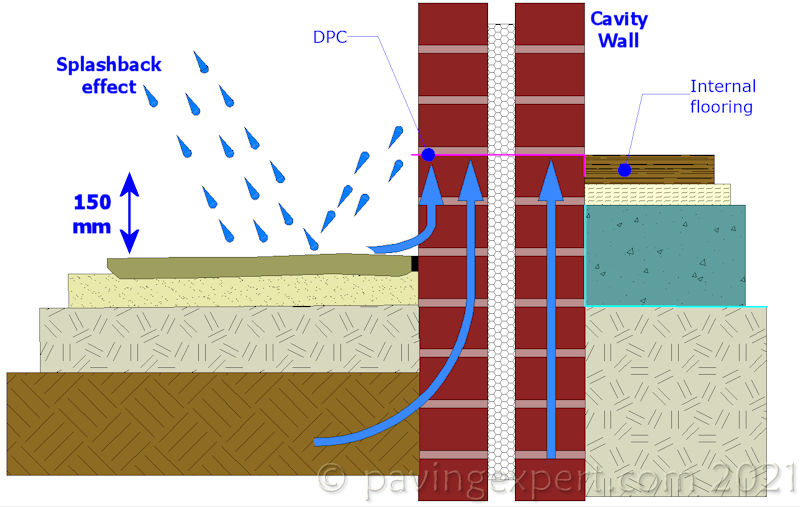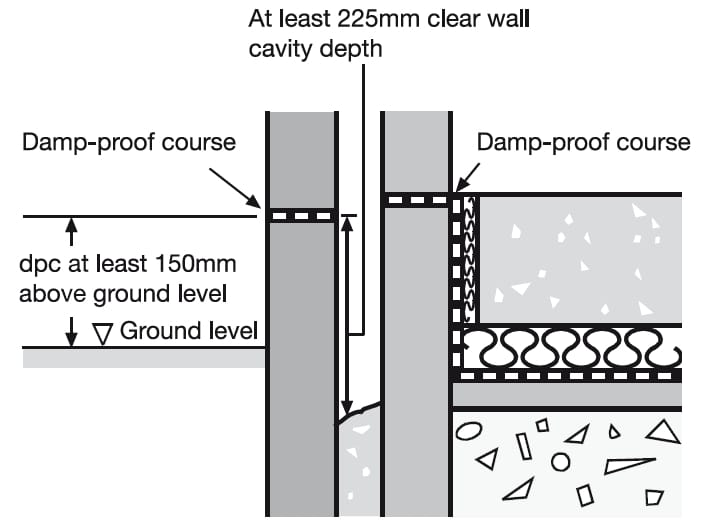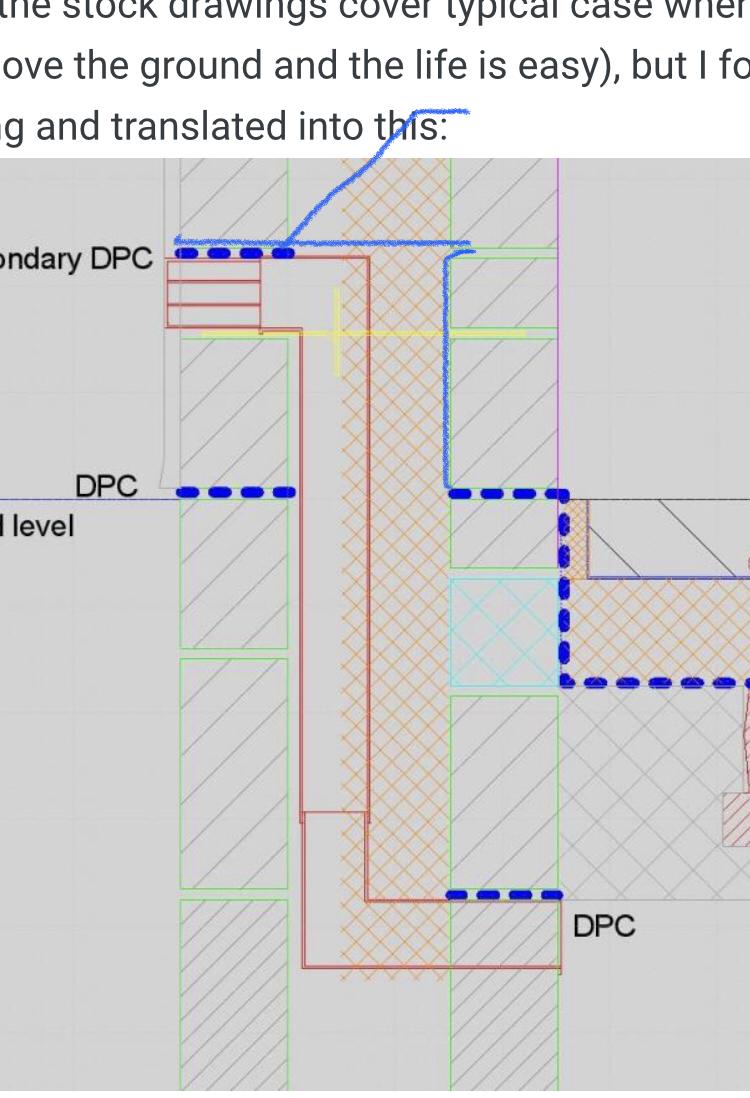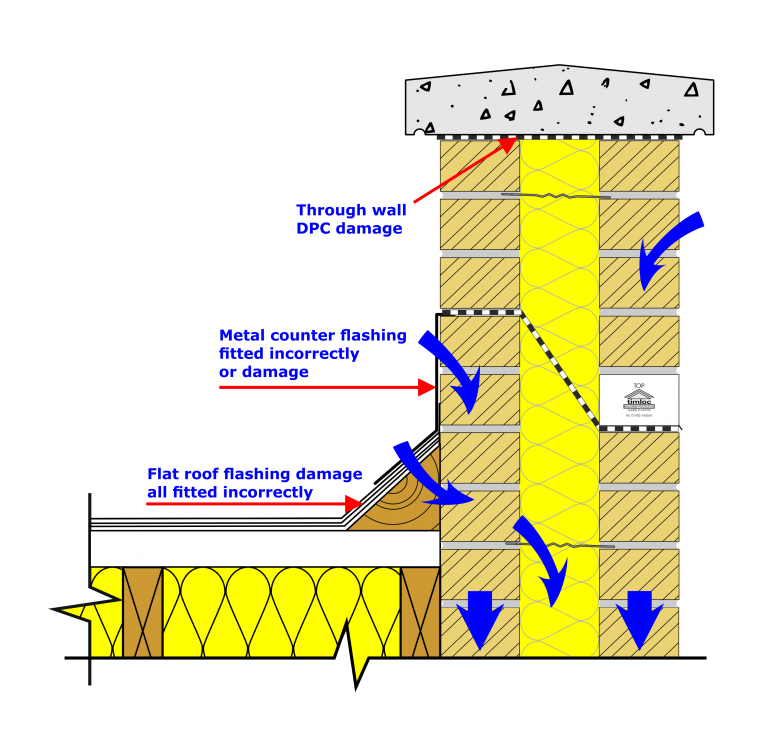Type B Vertical DPC NBS Source
A damp-proof course is a barrier, usually formed by a membrane, built into the walls of a property, typically 150 mm above ground level, to prevent damp rising through the walls. Historically, damp-proof courses may have been formed using bitumen, slates, lead, pitch, asphalt or low absorption bricks. They emerged during the Victorian era and.
Building Guidelines Cavity walls DPC's
What is DPC? The damp proof course (DPC) is generally applied at basement levels, which restricts the movement of moisture through walls and floors. The selection of materials for the damp proof course and its various methods of applications in buildings is discussed. Materials for Damp Proof Course (DPC) Properties of Materials for DPC

Damp Proof Course (DPC) Methods of DPC application in Construction Cement Concrete
impermeable. Figure 9: DPC at least 150mm above finished ground level Figure 10: Stepped DPC levels on sloping sites Where homes are 'stepped' on a sloping site, care should be taken to link DPCs and DPMs so that all parts of each home are protected. DPC materials # Acceptable materials for DPCs include:

Damp Proof Course (DPC) Methods of DPC application in Construction Cement Concrete
14.10.2021 News Cavity trays are an important feature in external cavity walls to assist in ensuring any water is directed outside the building. Incorrect specification or installation can lead to defects in the wall and water damage that might be expensive or needlessly destructive to rectify.

All About Damp Proof Courses (2022)
Now effective! 2022 California Building Standards Code, Title 24, California Code of Regulations. Effective January 1, 2023 to December 31, 2025. It's that time again! The 2022 edition of Title 24 is now available. Publication date: July 1, 2022. Effective date: January 1, 2023. See the Codes tab for more information.

6.1.17 DPCs and cavity trays NHBC Standards 2023 NHBC Standards 2023
A metal damp proof course (DPC) between the stone foundation and brick wall. Damp proofing in construction is a type of moisture control applied to building walls and floors to prevent moisture from passing into the interior spaces. Dampness problems are among the most frequent problems encountered in residences. DPC visible between concrete foundation and brickwork.

How to Fit a Vertical DPC and Prevent Damp and Heat Loss in Adjoining Walls Vertical DPC
It is usually abbreviated to 'DPC', and in most buildings less than 30 years old, it consists of a DPM, which is a Damp Proof Membrane, an impermeable layer of material, most often a polyethylene or bitumen-polymer, that is laid in the bedding joint between two courses of bricks.

Damp Proof Course (DPC)
Defense Federal Acquisition Regulation Supplement (DFARS) and Procedures, Guidance, and Information (PGI) The DFARS and PGI provide uniform acquisition policies and procedures for the Department of Defense. An electronic version of the official DFARS is available at www.ecfr.gov, under Title 48, Chapter 2. For DoD class deviations from the FAR.
Building Guidelines Cavity walls DPC's
DPCs and related components shall be provided to prevent moisture rising or entering the building. Issues to be taken into account include: provision of DPCs and cavity trays stepped cavity trays parapet details. Provision of DPCs and cavity trays DPCs and flexible cavity trays should be of the correct dimensions to suit the detailed design.

Damp Proof Course (DPC) Methods of DPC application in Construction Cement Concrete
8 handy hints for installing horizontal damp proof course. The inner leaf damp proof course must link with the upstand to the damp proof membrane, by a minimum of 50mm and be sealed to it. This is to ensure a continuous barrier against damp, this includes where low level cills are present ie doorways. Lay the DPC on a full even bed of fresh.
Building Guidelines Cavity walls DPC's
Function ~ the primary function of any damp-proof course (dpc) or damp-proof membrane (dpm) is to provide an impermeable barrier to the passage of moisture. The three basic ways in which damp-proof courses are used is to:-. Building Regulations, Approved Document C2, Section 5: A wall may be built with a damp-proof course of bituminous.

FFL at ground level Damp & DPCs
DPCs are now required to construct new buildings, preventing rising/penetrating damp which can lead to costly repairs due to mould and damp in the building materials.

How to lay a DPC YouTube
BNi Building News. Part 3 - 2016. (888) 264-2665. Building standards that have been adopted by state agencies without change from building standards contained in national model codes; Building standards that have been adopted and adapted from national model codes to address California's ever-changing conditions; and. Building standards.

D.P.C., D.P.M. and Cavity Tray Road To Learning
User note: About this chapter: Chapter 3 contains a wide array of building planning requirements that are critical to designing a safe and usable building. This includes, but is not limited to, requirements related to: general structural design, fire-resistant construction, light, ventilation, sanitation, plumbing fixture clearances, minimum room area and ceiling height, safety glazing, means.
Building Guidelines Cavity walls DPC's
A Damp Proof Course (DPC) is a continuous barrier installed in buildings to prevent capillary climb of water in walls. Current building regulations state that walls must resist the passage of water from the ground and that this requirement can be reached if a damp proof course is provided. Therefore almost all modern houses within the UK will.

What is DPC Damp Proof Course? DPC Material and Detailed Information Civil Site
A cavity wall is designed to prevent moisture penetrating to the inside face of the wall and causing damp problems in the building. In many situations it is necessary to include cavity trays in the wall, to prevent water penetration to the inner leaf.